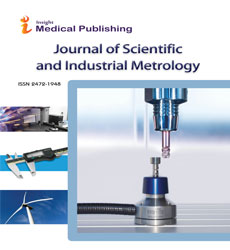Abstract
Metrological modeling of colorimetric measurements results of in hardware and software environments
The main development stages of the Colorimetry are described. The basic concepts and trends of modern colorimetry are defined. The definition of the term "High Resolution Colorimetry" as a new advance direction, based on the usage of rendering information systems and technologies of digital images processing is derived. Developed models of measurements results by the author are presented. They are the “base”, “fractal”, “information” and “complex” measurements results models which are got in hardware and software environments. The results of these investigations can be used in a control of the self-luminous and non self-luminous objects at all stages of their life cycle.
Background:
These researches are carried out within the scientific projects of the State Program "Electronics and Photonics", "Photonics 2015" and continue in 2016-2018 by the Program "Photonics and Opto - and Microelectronics". The author is one of the leaders of these projects. The main goal of the research is to develop metrological support of Colorimetry in software and hardware environments. The main hypothesis of research is “a digital images are information models of objects and sources of quantitative data about their properties”. However, it is necessary to take into account the loss of data in information systems. The author offers to use the model approach for estimation of measurement uncertainty using information entropy.
Methods and findings:
In the working process on the project both theoretical and experimental research methods based on scientific research laboratory of Opto-electronic instrumentation (Belarusian national technical University) and other leading lighting laboratories of Belarusian State Institute of Metrology, National Academy of Sciences of Belarus, etc. are used. The results of investigations suggest that the High Resolution Colorimetry can be applied to extended objects. Implemented the accuracy of photometric and colorimetric results measurements is ± 10 %. The developed methods are the basis for a methodology for measuring, registration and visual objects control using digital images. This methodology may be applicable to validation and verification of registration, display devices and test methods in accredited laboratories.
Author(s):
Yauheniya Saukova
Abstract | Full-Text | PDF
Share this

Abstracted/Indexed in
- Google Scholar
- Directory of Research Journal Indexing (DRJI)
- WorldCat
- Secret Search Engine Labs
Open Access Journals
- Aquaculture & Veterinary Science
- Chemistry & Chemical Sciences
- Clinical Sciences
- Engineering
- General Science
- Genetics & Molecular Biology
- Health Care & Nursing
- Immunology & Microbiology
- Materials Science
- Mathematics & Physics
- Medical Sciences
- Neurology & Psychiatry
- Oncology & Cancer Science
- Pharmaceutical Sciences
